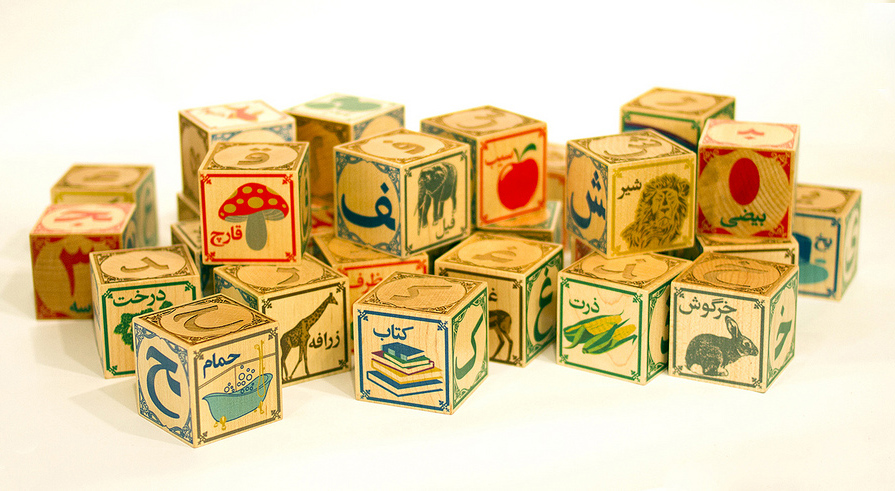Translation in the Study of Religion: Interview with John Nemec
John Nemec, associate professor of religious studies at the University of Virginia, assumed the editorship of the AAR-OUP Religion in Translation book series at the beginning of 2015 and will serve as its editor for five years. In this e-mail interview, Nemec talks to RSN about his plans for the book series and the role of translated works in the field of religion.
RSN: For those unfamiliar with it, translation is a deceptively interpretive process. The question of how to measure fidelity to the formal elements of a text (e.g., syntax, word choice, voice) versus its overall narrative, idiomatic, or didactic tone is both delicate and perennial. This task might become even more difficult as the translator decides how to handle language rich in theological development. How do you determine what makes a good translation, especially in the field of religion?
John Nemec: This is an excellent question that cannot be answered simply. First of all, translation has been and continues to be approached in various ways, and there are merits to a host of possible technical approaches to the work in question. Indeed, different projects present varying challenges and concerns; and, as your question indicates, one sometimes must negotiate or balance fidelity to the form of a text with the need to produce the desired tone, or narrative feel, in the target language. So I believe an editor should be “agnostic” when it comes to translation strategies. We all know the famous dictum, traduttore traditore; but my view is that how to make decisions in translation depends on what is in the offing, what is at stake in a given translation project and, perhaps to a lesser extent, what it is the translator wishes to accomplish.
Accessibility is also important. One’s rendering should allow those who know only the target language to get some good sense of the work being translated. I would also say that whatever it is that the translator chooses to do, his or her reasons should be transparent and sufficiently explained so the reader can know why the translator made whatever decisions he or she did in rendering the work.
Finally, we shouldn’t forget the very selection process in translation work: not infrequently, what one chooses to render is as important as how one chooses to render it.
So, to answer your question directly, I think a good translation is made by making a text sufficiently accessible; it necessarily involves the translator’s accuracy in translation; it requires a certain aptness in selecting the work for translation (or, I should add, retranslation), as well as a certain wisdom in deciding how to approach the given materials for their own particularities. But, there really is such a tremendous range of materials that have been rendered or that are yet to be translated that we must simply deal with each project—and the challenges they bring—on a case-by-case basis.
RSN: You’ve previously published a book in this series, The Ubiquitous Siva (2011). What made you want to become the series editor?
JN: Well, the opportunity presented itself when Anne Monius reached the end of her term as editor, and, to be honest, serving as editor had never really occurred to me before I came to know that the position would be open. But once the search for Anne’s replacement was on, it was an easy decision for me to apply. Simply, I believe in translation work as a major—a foundational—form of scholarship, one that indeed does involve interpretive work, as your previous question indicates. In fact, reliable translations often can hardly be ventured until one has sufficiently studied the subject(s) engaged by the text being rendered—that is, good translations often require the translator to do a great deal of scholarly research before determining what the text is trying to say. I think this dimension of translation work is sometimes underappreciated by those who see it as a “mere service” to the field. And because I feel that translation has sometimes been given short shrift in the Academy for precisely this lack of understanding—and despite the fact, I would add, that so many of us rely on translations and the fact that translation work is sometimes the form of scholarship that best stands the tests of time—I saw the editorship as a way of supporting and promoting this kind of work and the scholars who do it. So the decision to seek the editorship was a pragmatic one, and motivated relatively straightforwardly be the desire to facilitate the production of this type of scholarship and to assist those who engage it. I hope my time in this position will help scholars who care about translation to get their work into print, because translation is a fundamental method of religious studies and is a vital mode of humanistic inquiry.
RSN: What overall goals do you have for the Religion in Translation series?
JN: I hope to help to bring major works that have not yet been rendered in English into print in the series. Aptly selected retranslations are also welcome. And I hope the texts we bring to print will serve, as translation projects so often do, to open new fields of inquiry. Finally, if my work here does something further to promote the value of scholarly translation itself, then so much the better. But this is really the crux of the matter to me: I’d like to promote this type of—what I think of as first-order—scholarship and those who engage in it.
RSN: Are you in search of particular kinds of submissions? Is there an area where you’d like to see more growth?
JN: There are a few works that, if I had my druthers, we would see added to the series. On the other hand, the series has a triple mandate, one that is simply too broad for any one scholar to see all it includes at any depth; and so at some level I hope to be surprised by the project proposals. I have no doubt that scholars in the field are well aware of all kinds of influential works of religion (or about religion) that I could never be expected to know from my own work, and I hope they come forward with their manuscripts and project proposals.
In general, I would like to see works of or about religion that are little known or understood, but that were or are influential within the given religion or in the study of it, translated or retranslated for the series. And the range of possible works is broad because the triple mandate of the series dictates that three categories of works are eligible for publication. First, we publish primary works of religion, from any religious tradition and any time period. Second, we publish secondary scholarly works on religion, again from any time period. Third, we publish primary theoretical works on religion. In this third area, let me say that I do hope to have occasion to bring retranslated and properly annotated renderings of some of Max Weber’s writings into print, so that is one area where I am looking for something particular, and I hope someone will come forward who is interested in precisely such a project. Also, I would love to see anthropological work find its way into the series.
Otherwise, we are simply looking for well-conceived submissions and creative submissions: we should be capacious in what it is we count as mattering to religion. I can offer a few examples of areas of interest, more or less off the top of my head: There is a host of material from Hindu and Buddhist traditions that I know of from my own work that would be well suited for the series. I also know there is a massive canon of heretofore untranslated works in Islamic studies (including primary texts and foundational scholarly writings on Islam in German and other languages) that could fit well in the series as well, be they works in Arabic or other languages. The same could be said of East Asian religions. Yet another area of interest is global Christianity, of which I would like to see more works made available. I recently looked for translated works associated with liberation theology but found less available than is desirable. There must be a host of important materials in African Religions, and from Native American traditions, as well. But, anyhow, all of this is quite obviously just the proverbial tip of the iceberg. The mandate of the series is broad, and in a nutshell we are looking for well-conceived projects that deal with significant works of and about religion, from any religious tradition and time period.









